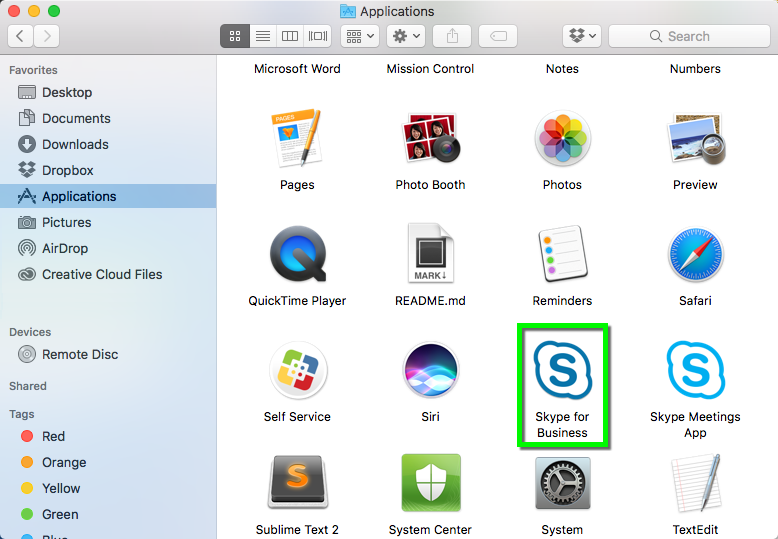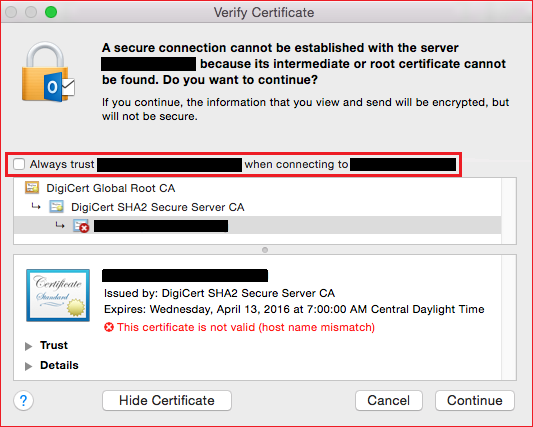

- #ADD SKYPE CERTIFICATE FOR MAC HOW TO#
- #ADD SKYPE CERTIFICATE FOR MAC INSTALL#
- #ADD SKYPE CERTIFICATE FOR MAC WINDOWS 10#
- #ADD SKYPE CERTIFICATE FOR MAC MAC#
Network Gateway setup and connect the VPN gateway from a Windows 10 client We see the steps one by one and create complete Virtual The following steps are involved in setting up Azure Virtual
#ADD SKYPE CERTIFICATE FOR MAC INSTALL#
In the end, we are going to install theĪzure VPN client downloaded from Azure Virtual private gateway on the Windowsġ0 client and establish the VPN connection using the client certificate already The root certificate to Azure VPN gateway.
#ADD SKYPE CERTIFICATE FOR MAC HOW TO#
WeĪre going to see how to export root and client certificates and how to upload The client those are using the VPNĬonnection client needs to be installed with a client certificate created. We demonstrate how to create a self-signed certificate on Windows 10 computerĪnd upload a root certificate to Azure. We are using the Azure certificate authentication, and here
#ADD SKYPE CERTIFICATE FOR MAC MAC#
Where windows client uses SSTP and MAC X OS, and Linux client uses iKEv2. In this article, we are going to use SSTP and IKEv2.

There are multiple client protocols available to connect using Point to Site VPN, such as OpenVPN, SSTP, and Ikev2. The client computers running Windows, MAC X OS, Linux can connect to Azure Virtual Network securely from a remote location, such as home or conference, useful for telecommuters.

The Point to Site VPN allows you to connect to the Azure Virtual network using a secure connection over the internet. The Azure Point to Site VPN Setup, also called Azure P2S VPN Setup, is most widely used where the number of clients connecting to Azure Virtual Network is less. Get-Childitem cert:\LocalMachine\root -Recurse | Where-Object | remove-ItemĪfter removing these items all is back to normal. Lets Make use of PowerShell to find these problem child Items 🙂. The following command compares the “Issuer” property and the “Subject” property of each certificate in the store, and then outputs details of certificates that do not meet the criteria of a self-signed certificate: You can use a Windows PowerShell command to find certificates that are put in the Trusted Root Certification Authorities store incorrectly on the local computer.
If you import new certificates manually, make sure that you select the computer’s Trusted Root Certification Authorities store for the self-signed certificates, and the computer’s Intermediate Certification Authorities store for the certificates that are not self-signed certificates. Move any certificates that are not self-signed certificates from the Trusted Root Certification Authorities store to the Intermediate Certification Authorities store. If you use group policies to deploy certificates, make sure that the Trusted Root Certification Authorities store only contains self-signed certificates (certificates in which the certificate property “Subject” is the same as the certificate property “Issuer”). To resolve this issue, use one of the following methods: This is normal and expected for Root Certification Authorities. Note: A self-signed certificate is defined as a certificate in which the “Issuer” property and the “Subject” property on the certificate are the same. Lync Server 2013 deployments in Windows Server 2012 may experience this issue because Windows Server 2012 implements checks for a higher level of trust for certificate authentication. This is an incorrect configuration that can cause HTTP communication between Lync servers to fail with an untrusted root certificate error. This issue occurs because a certificate that is not self-signed was installed in the Trusted Root Certification Authorities store. Event ID 32042īefore we get to the Resolution here is the Cause: Cause: User were also faced with an Error message on the Skype for Business Client.Īfter going through all the Event logs on the C:\Softlib\Scripts\Set-ReadOnlyRadReps.ps1 i come across the below Application Error Event. Please make sure that Skype for Business is running and signed-in and try again. Skype For Business Error : Create Skype Meeting Failed. Recently i was faced with the below issue when users tried to create new Skype for Business meetings in Outlook. I am a major Lego Fan boy and every now and then I do show some of the builds on my socials. In my blog you will find topics around Azure, Exchange, Teams, Intune and a few PowerShell here and there :). The technology I focused on the most was Microsoft Exchange and over the years I started moving more towards Microsoft's cloud technologies. I have spend a number of years helping customers migrate their environments to Microsoft 365 as well as Microsoft Azure. I am Shaun, a driven consultant excited about all things Microsoft.







 0 kommentar(er)
0 kommentar(er)
